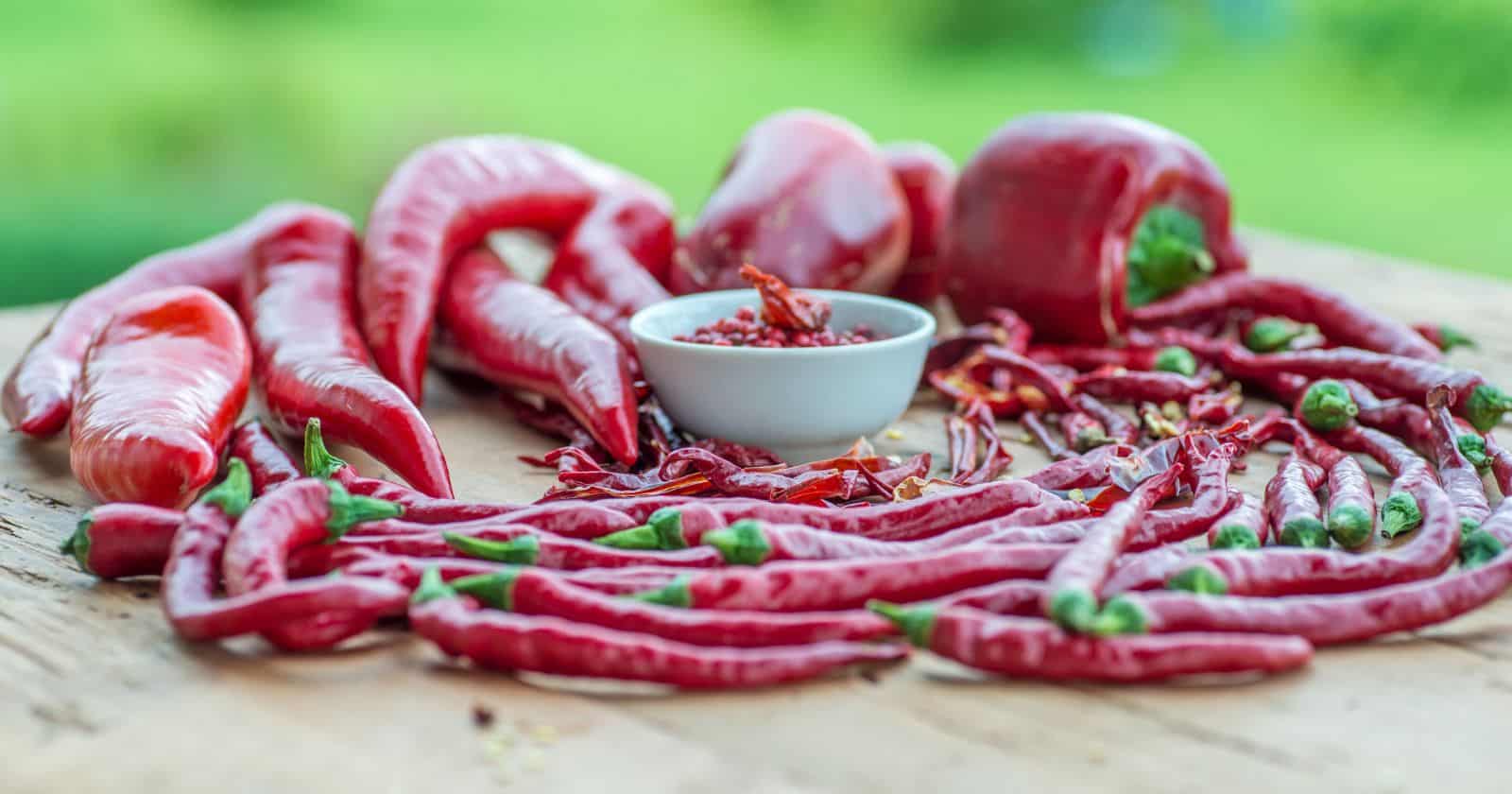Bell peppers are nutritious veggies packed with vitamins, minerals, and antioxidants beneficial for health. But what about the skins? Are bell pepper skins bad for you?
The short answer: No, bell pepper skins are not bad for you.
In fact, leaving the skins on provides extra nutrition and health benefits. Here’s an in-depth look at why bell pepper skins are good for you.
Bell Pepper Skin Nutrition
Bell pepper skins contain high amounts of important antioxidants and phytochemicals. These compounds provide protection against cellular damage, inflammation, and chronic disease.
Specifically, bell pepper skins are excellent sources of:
- Vitamin C – Supports immune function and collagen production for youthful skin.
- Beta-carotene – An antioxidant that converts to vitamin A, which benefits eye and skin health.
- Lutein – Protects the eyes from blue light damage.
- Quercetin – Reduces inflammation and may lower heart disease risk.
Bell pepper skins also contain small amounts of vitamin E, vitamin K, vitamin B6, folate, thiamin, magnesium, and potassium.
Bell Pepper Skin Benefits
Consuming bell pepper skins provides many health perks:
1. Boosts Skin Health
The vitamin C and beta-carotene in bell peppers act as antioxidants to prevent premature aging and wrinkles. Vitamin A supports skin cell regeneration.
2. Supports Immune Function
The abundance of vitamin C in bell pepper skins helps white blood cells function properly to ward off infection.
3. Reduces Inflammation
Quercetin and other antioxidants in bell pepper skins combat inflammation implicated in chronic illness.
4. Protects Eye Health
Lutein filters blue light and prevents macular degeneration to maintain healthy vision.
Should You Eat Pepper Skins?
With all the nutrition packed into bell pepper skins, it may seem like an obvious choice to eat them. However, some people may want to remove the skins for texture or taste preferences.
So should you eat bell pepper skins? Here are some factors to consider:
Texture
For some, the thicker texture of bell pepper skins may be unpleasant. Pepper skins can get caught in teeth or have a chewy texture. If texture is an issue, removing skins is reasonable.
Taste
Bell pepper flesh tends to be sweeter and more flavorful. The skins can be mildly bitter. If you dislike the taste, peeling peppers is understandable.
Appearance
The wrinkled exterior of pepper skins may not be visually appealing for certain dishes. Peeling can improve appearance when looks matter.
Time
Removing pepper skins takes extra time and prep work. For quick cooking, leaving skins on can be preferable.
Nutrition
As discussed, skins provide extra nutrition. If maximizing nutrients is a priority, consume the skins.
Personal Preference
At the end of the day, enjoy bell peppers however you prefer. If you dislike the skins, peeling them is perfectly fine. Just be sure to retain any liquid from cooking for nutrients.
Safety of Eating Bell Pepper Skins
Bell peppers grow close to the ground, raising questions about pesticide residues on skins. However, thoroughly washing bell peppers removes pesticide residues.
According to food safety experts, the skins pose no hazard for consumption. In fact, removing the skins decreases nutrition.
As long as you wash bell peppers before eating, the skins are perfectly safe to eat.
Tips for Eating Bell Pepper Skins
Follow these tips to get the most from bell pepper skins:
- Wash thoroughly under running water before eating.
- Keep skins intact for roasted, grilled, or baked peppers.
- Use pepper skins when making broth or stock.
- Leave skins on for juicing or making gazpacho.
- Chop finely or puree skins when concealed texture is preferred.
Difference Between Eating Raw vs. Cooked Red Bell Peppers
Red bell peppers provide great nutrition whether eaten raw or cooked. However, there are some differences in nutrition and taste when consuming them raw vs. cooked.
Raw Red Bell Peppers
- Provide the highest concentration of vitamin C. Heat degrades some vitamin C.
- Have a crisp, juicy texture perfect for salads and dips.
- Taste mildly sweet with a hint of bitterness from the skins.
- Require no preparation other than washing and slicing.
- May be difficult for some people to fully digest when eaten raw.
Cooked Red Bell Peppers
- Retain much of their vitamin C, A, and B6 after cooking.
- Have a softer, more tender texture good for stuffing or sautéing.
- Develop a sweeter, more complex flavor when roasted or grilled.
- May be easier to chew and digest when cooked through.
- Require cooking prep like roasting, grilling, or sautéing.
Overall, raw and cooked red bell peppers each have their perks. Eat them raw to maximize vitamin C and enjoy the fresh crispness. Cook them to concentrate flavor and improve digestibility. For the best of both, enjoy red bell peppers raw in some meals and cooked in others.
Alternative Ways to Enjoy Eating Bell Pepper Skins
Don’t enjoy the texture or taste of bell pepper skins? You can still reap their nutritional benefits through these creative preparation methods:
- Blend into sauces or dips. Add bell pepper skins to salsa, hummus, gazpacho, or blender pesto. The pepper skins will blend smoothly into the texture.
- Juice or make stock. Use the entire pepper, including skins, when making vegetable juice or stock. Simply strain out the skin fibers after cooking.
- Roast or char. High heat from roasting, grilling, or broiling helps break down the texture of skins. Charred bell pepper skins add great flavor.
- Add to stir fries. Quick-cooking pepper skins in a hot skillet or wok gives them a meaty texture. Toss into stir fries.
- Make pepper powder. Dehydrate bell pepper skins then blend into a fine powder to sprinkle over dishes.
- Pickle pepper skins. Soaking skins in vinegar brine tenderizes texture while adding tangy flavor.
- Infuse into oil. Steep roasted pepper skins in olive oil to extract flavor and color without texture. Use as a finishing oil.
What Parts of a Bell Pepper Can’t You Eat?
While bell pepper skins are perfectly edible, there are a few parts of the pepper that should be discarded:
- Stem – The green stem attached to the top of the pepper is too fibrous to eat raw. It’s possible to eat cooked, but most people remove it.
- White ribs – The tough white membrane on the inner walls is very difficult to chew and digest. Scrape off and discard the ribs.
- Seeds – Pepper seeds have an bitter, acidic taste. While not toxic, they are unpleasant to eat raw. Removing the seeds is standard practice.
- Core – The white, spongy core inside housed the seeds. It has a bitter taste and tough texture. Scoop out and throw away the core.
So in summary, the edible parts of a bell pepper are the outer walls, known as the pericarp or flesh, and the inner membranes or ribs attached to these walls. The seeds, core, stem, and white inner ribs can be discarded.
Are Bell Pepper Skins Hard to Digest?
Some people wonder if bell pepper skins are difficult to break down during digestion because of their thicker texture. Here’s a look at the digestibility factor:
- Bell pepper cell walls are composed of cellulose and pectin. Humans lack the enzyme to break down cellulose.
- However, the cell walls in bell pepper skins are very thin compared to other produce skins. This makes them relatively easy to chew and pass through the digestive tract.
- Cooking bell peppers breaks down the cell structure, further improving digestibility. Bell skins become very soft when roasted or sautéed.
- People with gastrointestinal conditions like IBS may find skin texture irritating. Removing skins is reasonable for those with sensitivity.
- For most people, consuming bell pepper skins poses no digestive problems. The skins pass through the gut fully intact along with other fibrous components.
So while humans can’t fully break down the cellulose in pepper skins, the skins don’t present a major digestive challenge. Their thin structure and softening during cooking makes bell pepper skins easy for most people to digest.
The Takeaway on Bell Pepper Skins
Far from being bad, bell pepper skins provide extra nutrition and health benefits. Loaded with antioxidants, vitamins, and plant compounds, the skins support skin health, immunity, eye function, and more.
For optimal nutrition and flavor, wash bell peppers and consume the skins along with the flesh. Discarding the skins means missing out on vital antioxidants and phytonutrients essential for good health.





